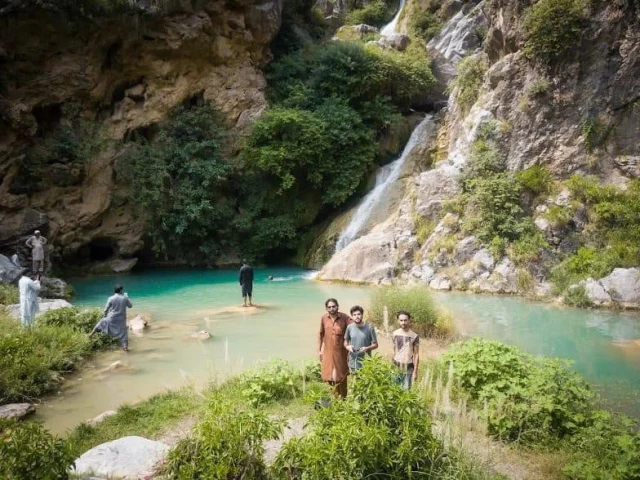Work has been completed at Hazara Waterfalls in Jab Valley, Haripur, as part of a UK-funded ecotourism initiative that aimed to transform the area into one of Khyber-Pakhtunkhwa’s most distinctive natural attractions.
The project, supported by the UK Foreign, Commonwealth & Development Office (FCDO) through WWF-Pakistan’s Water Resource Accountability Project (WRAP), has successfully completed the first phase of development.
With funding of Rs5 million, the initiative constructed a safe walking trail, a visitors’ cabin and viewing platforms designed to ensure both accessibility and environmental safety.
The improved facilities replace the dangerous local path previously used by residents and visitors, providing a safer route to the site’s eight main waterfalls, the highest of which rises almost 400 feet. The improvements aim to promote environmentally friendly tourism while preserving the fragile ecosystem of the Jab Valley.
Read: Serendipity: a little-known waterfall enchants visitors to the Shingraie valley
Discovered in 2021 by Hassan Nisar, Founder and CEO of Metrix Pakistan, Hazara Waterfalls is now poised to become a key part of Khyber-Pakhtunkhwa’s tourism landscape. “When I came back to the Jab Valley and saw the completed work, it was an emotional moment,” Nisar said during his visit to the site earlier this month. “Just a few years ago, this place was hidden from the world, known only to a handful of locals. Now seeing safe trails, eco-friendly structures, and local families who earn their income from tourism is deeply rewarding.”
He added that the transformation reflected the strength of public-private collaboration and the potential of Pakistan’s unexplored natural assets. “Our goal was not only to build trails, but also to create hope,” Nisar said. “The smiles on the faces of local young people, who now work as guides and vendors, tell the true story of progress. Jab Valley has proven that development and conservation can go hand in hand.”
Raja Muhammad Tahir, a prominent journalist based in Haripur who has actively promoted the waterfalls alongside Nisar since their discovery, also welcomed the completion of the project. “When we first started reporting on this area, there were no roads, no signage, no reconnaissance,” he said. “Today, Jab Valley is on the tourism map of Pakistan, not by chance, but due to constant efforts and vision. This project has given Haripur a new identity.”
Learn more: Highest waterfall in Hazara division obscured by neglect
Tahir added that continued media attention and responsible tourism management would be key to preserving the valley’s pristine environment. “The challenge now is to sustain what has been built and ensure that visitors respect nature and that the benefits flow to local communities,” he said.
Residents also expressed optimism about the long-term economic and social benefits of the project. Several families have already started offering guided tours, refreshments and handicrafts to visitors. Community elders said the project had provided new income opportunities while encouraging environmental awareness among younger generations.
With the completion of the first phase, the Hazara Waterfalls stand has transformed from a remote natural wonder into a managed ecotourism destination, offering visitors a rare convergence of natural beauty, community benefits and environmental stewardship.




